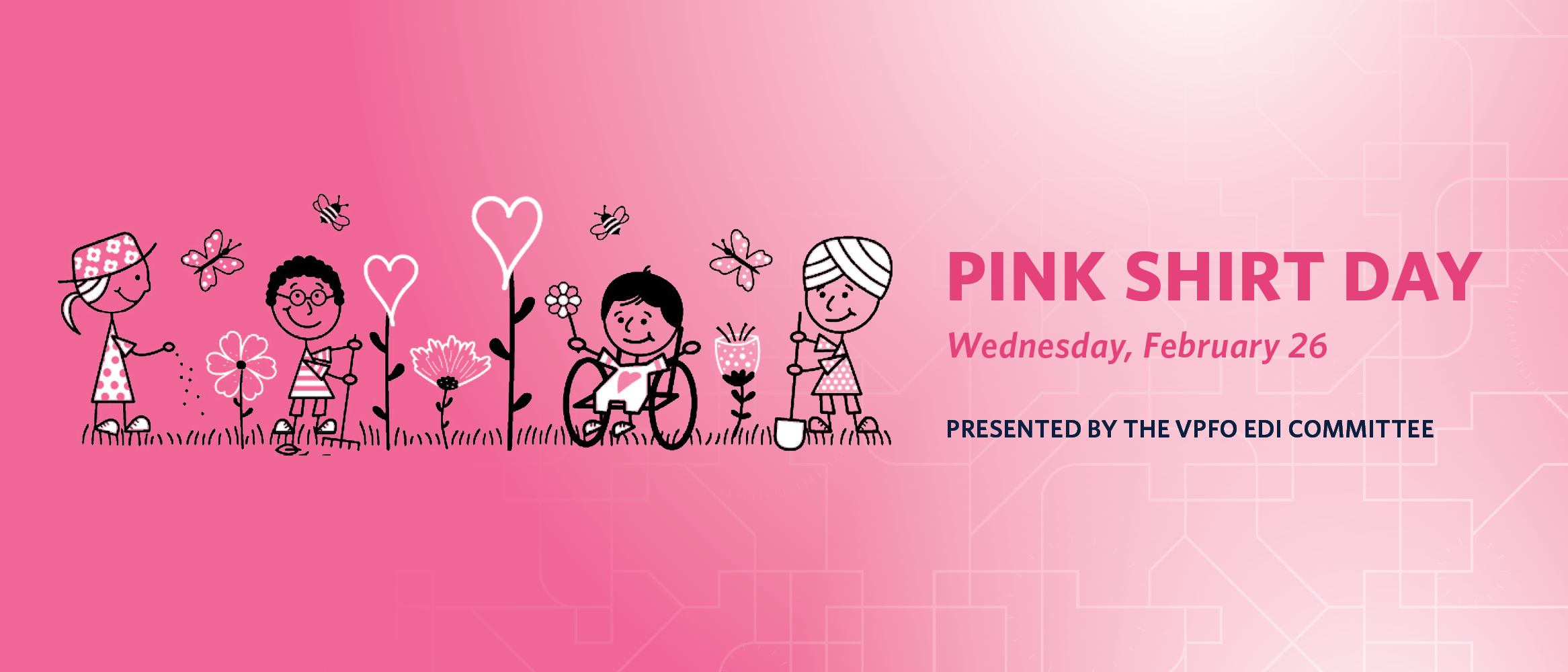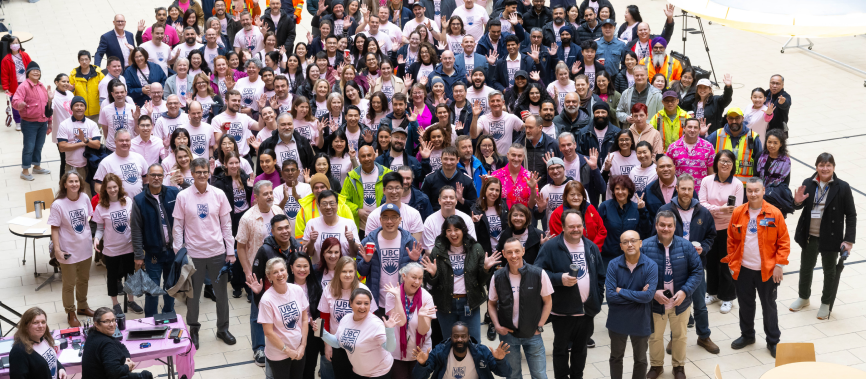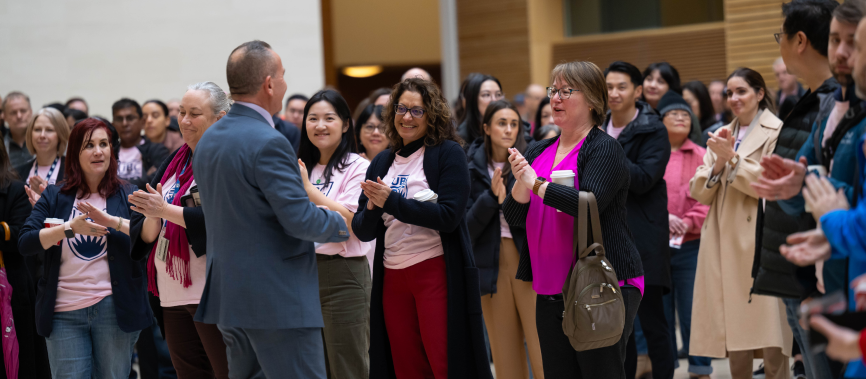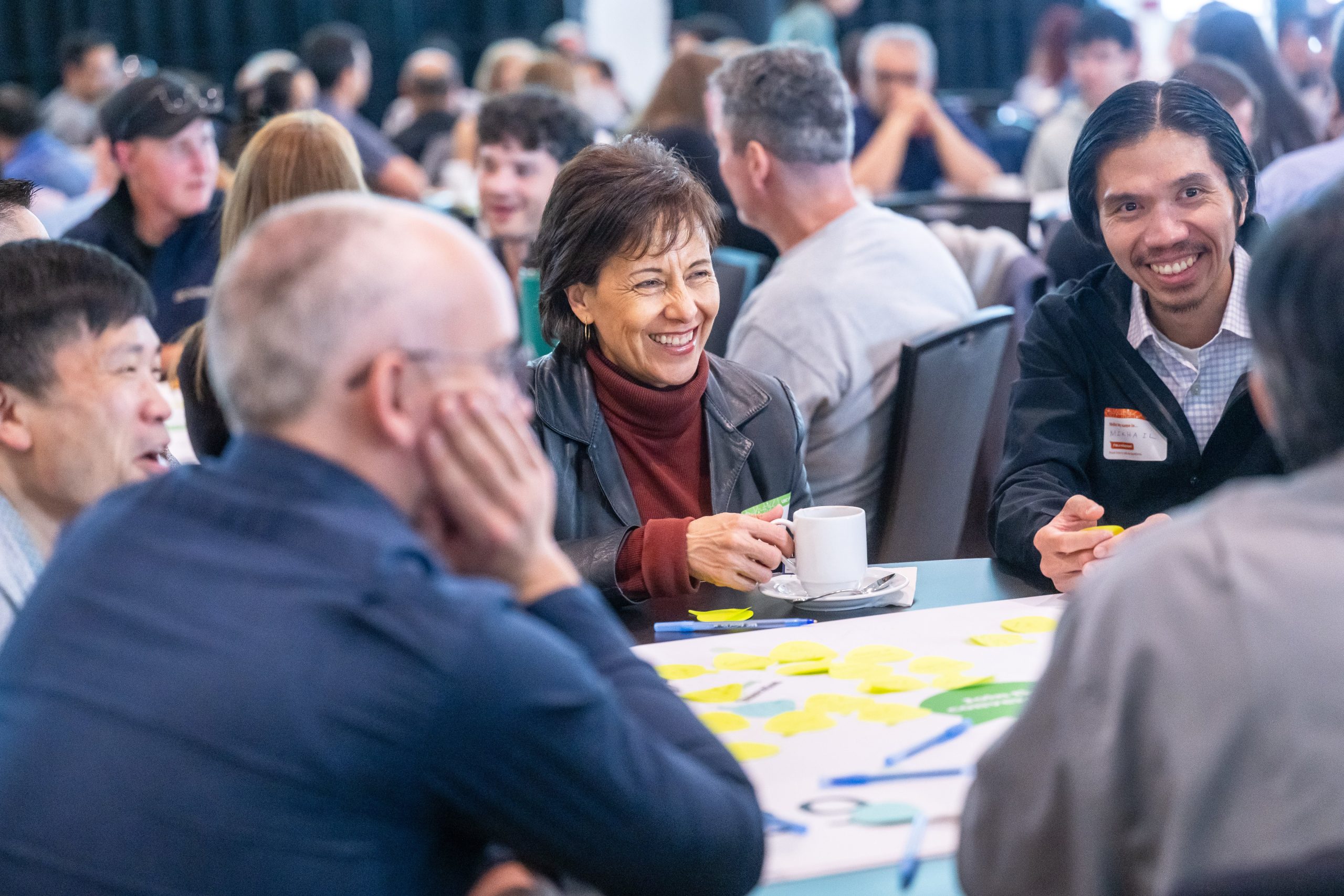Equity, Diversity & Inclusion
Contribute to creating an inclusive work culture at the VPFO
The VPFO EDI Committee would like to hear your suggestions on how we can help promote inclusion, equity and celebration of diversity within your team or within the portfolio at large.
Equity, Diversity & Inclusion at the VPFO
An initiative lead by the VPFO Human Resources department, Equity, Inclusion and Diversity (EDI) is a journey that the VPFO portfolio is taking with our partners at Equity and Inclusion, UBC Central Human Resources, and others to transform our work and our practice to improve our workplace.
What is EDI?
What do we mean when we speak about equity, diversity, and inclusion? The UBC Equity & Inclusion Office has some foundational definitions to help us get grounded. For definitions of other common terms that surround EDI work, please see our glossary.
Equity
Equity refers to achieving parity in policy, process and outcomes for historically and/or currently underrepresented and/or marginalized people and groups while accounting for diversity. It considers power, access, opportunities, treatment, impacts and outcomes, in three main areas:
- Representational equity: the proportional participation at all levels of an institution.
- Resource equity: the distribution of resources in order to close equity gaps.
- Equity-mindedness: the demonstration of an awareness of, and willingness to, address equity issues.
- Diversity
- Differences in the lived experiences and perspectives of people that may include race, ethnicity, colour, ancestry, place of origin, political belief, religion , marital status, family status, physical disability, mental disability, sex, gender identity or expression, sexual orientation, age, class, and/or socio-economic situations.
Diversity
Differences in the lived experiences and perspectives of people that may include race, ethnicity, colour, ancestry, place of origin, political belief, religion , marital status, family status, physical disability, mental disability, sex, gender identity or expression, sexual orientation, age, class, and/or socio-economic situations.
Inclusion
Inclusion is an active, intentional, and continuous process to address inequities in power and privilege and build a respectful and diverse community that ensures welcoming spaces and opportunities to flourish for all.
VPFO EDI Governance
The VPFO has formed diversity and inclusion committee to identify the best opportunities to continue building the type of workplace we want. Voices and perspectives from across the portfolio will partner with the Human Resources team to build a framework for equity, diversity, and inclusion within the VPFO for the next several years.
Committee members
Chair
- Unfilled
Members-at-large
- Ana Policzer, Senior Facilities Planner
- Blair Anticliffe, Energy Engineer
- Erin Kastner, Geospatial Information Manager
- Gregor MacDonald, Human Resources Advisor
- Joan Mar, Director, Financial Planning & Analysis
- John Mendes, Manager of Insurance & Loss Prevention
- Kasia Burza, Human Resources Advisor
- Kimberly Tholl, Procurement Partner
- Paul Gill, Manager, Health & Safety Partnerships
- Robert Tremonti, Lead Advisor, Information Security Risk & Methods – PrISM SRS
- Sean Lynch, Director, Custodial Services
- Shelley Kayfish, Director Campus Operations & Risk Management
EDI Resources
UBC is working on EDI initiatives across the campus. Some resources are specific the VPFO, some are broad initiatives setting the direction for the entire university, and some are highly targeted work on a specific topic.
UBC EDI websites
UBC is developing many resources to help accelerate our work on equity, diversity and inclusion. These website capture some of the efforts across the university that can inform and support our work at the VPFO.
- Equity.ubc.ca: The Equity and Inclusion office are working to build a community in which human rights are respected, and equity and inclusion are embedded in all areas of academic, work and campus life.
EDI training
We each have an active role to play in working against oppression and towards equality, and finding ways to elevate historically and systemically marginalized groups. Education is key to effectively defeating racism and injustice.
To help, your Equity, Diversity and Inclusion (EDI) committee has produced a series of self-paced, free VFPO EDI canvas courses, available on UBC Workplace Learning (WPL).
Each course takes about 45 minutes to complete. The courses will help raise awareness on some challenging topics and offer opportunities for self-reflection and growth. Follow these links to register for the courses on WPL:
- VPFO EDI Journey Part 1: Foundations in Equity, Diversity and Inclusion
- VPFO EDI Journey Part 2: Power & Privilege
- VPFO EDI Journey Part 3: Stereotypes, Prejudice & Discrimination
- VPFO EDI Journey Part 4: Introduction to Anti-Racism
- VPFO EDI Journey Part 5: Systemic Racism
- VPFO EDI Journey Part 6: Stories of Resilience and Resistance
Completed all six modules?
Well done! Thanks for playing a part in making the VPFO and UBC a more inclusive and welcoming workplace. To retrieve your certificate, simply click on the button, log onto UBC WPL with your CWL, and enroll in the program.
EDI 101: Introductory series
The VPFO EDI has developed an introductory series to help you kickstart your Equity, Diversity & Inclusion (EDI) journey.
This series will introduce you to basic EDI concepts, deepen your understanding of the ways in which EDI is relevant to our community, and help prepare you for conversations around important topics, which may not always be comfortable but are crucial to create a more open and inclusive work environment at UBC.
- What is a land acknowledgement and how do you do it?
- Intersectionality: What is it and why it matters
- Systemic racism: What it looks like in Canada and how to fight it?
- How do we overcome our fear of talking about racism
- Microaggressions Part 1: What are they, how are they harmful and what to do if you commit one?
- Microaggressions Part 2: How can you respond to microaggressions?
- How can you be an effective ally?
- How do we foster cultural safety in the workplace?
EDI glossary
As EDI work has become more well-researched and defined, several terms and concepts have become common. You will likely hear these terms throughout our EDI journey and will be encouraged to understand and use them to help frame and discuss our work.
EDI Updates
Check back regularly for updates on our EDI progress and to learn how we’re performing as a portfolio. We will also be posting feature stories to illustrate how EDI at UBC comes to life though our day-to-day work.
-
Read more: Get ready for our 8th annual Pink Shirt Day celebration

Get ready for our 8th annual Pink Shirt Day celebration
The VPFO Equity, Diversity, and Inclusion (EDI) Committee presents Pink Shirt Day on Wednesday, February 26, 2025. This year’s theme is “Let Kindness Grow”. How can we cultivate a community of kindness, support, and understanding?
-
Read more: A big thank you from the VPFO EDI committee

A big thank you from the VPFO EDI committee
The VPFO EDI committee wishes to extend a huge heartfelt thank you to all current and outgoing members for their invaluable contributions to the various initiatives and achievements accomplished throughout the past several years. For those interested in joining the…
-
Read more: What does it look like to step outside of your comfort zone? Reflecting on VPFO team members’ acts of courage

What does it look like to step outside of your comfort zone? Reflecting on VPFO team members’ acts of courage
VPFO team members shared their stories on February 28, 2024, as hundreds of VPFO staff gathered for our 7th annual Pink Shirt Day . Together, we celebrated this year’s theme of Acts of Courage, with a sub-theme of Brave Spaces…
Did you find what you were looking for?
Thanks for your response! If you'd like to share further feedback, please take our survey.
Didn’t find what you were looking for? We’d like to hear from you! Share your thoughts by taking our survey.

